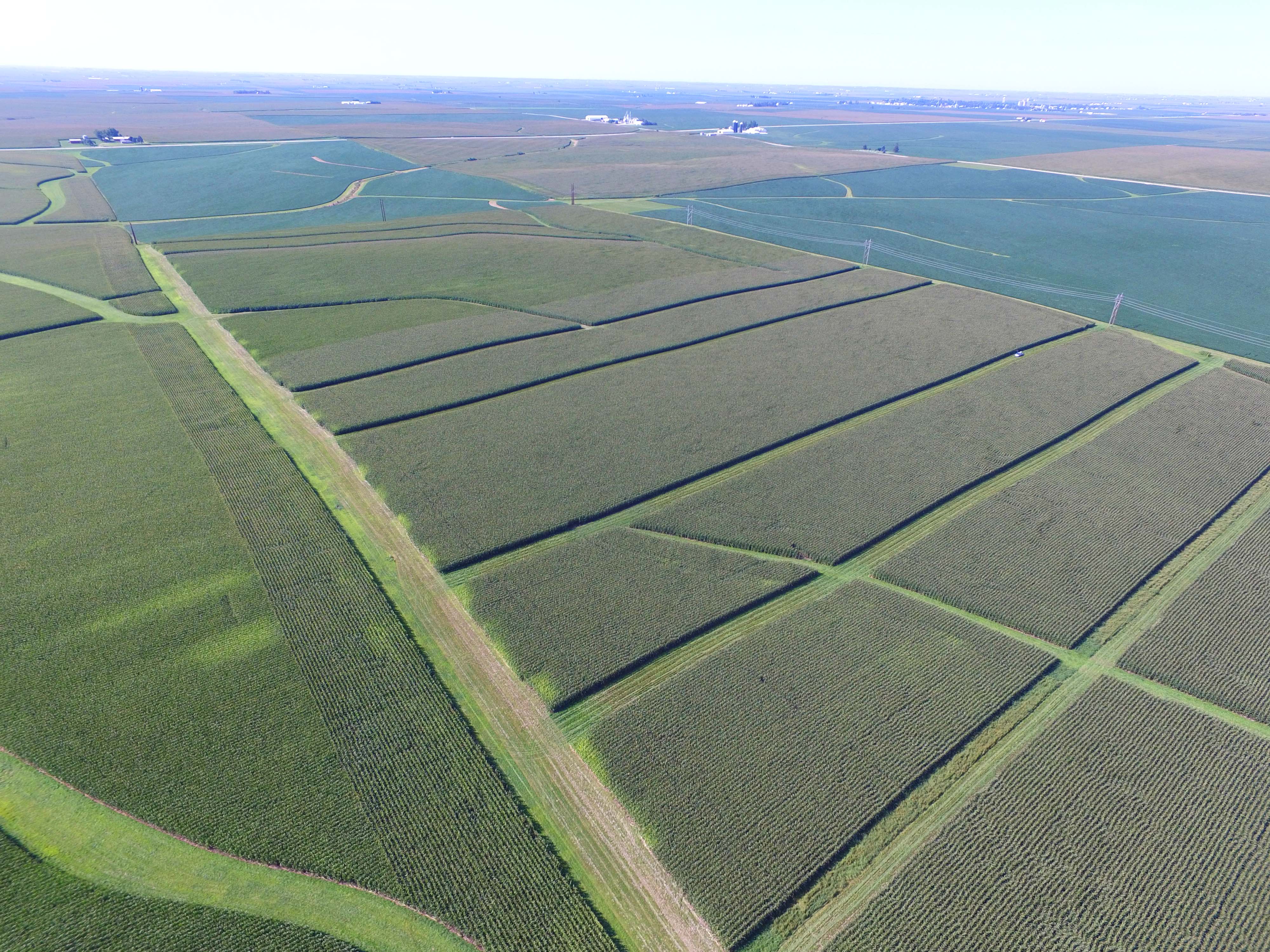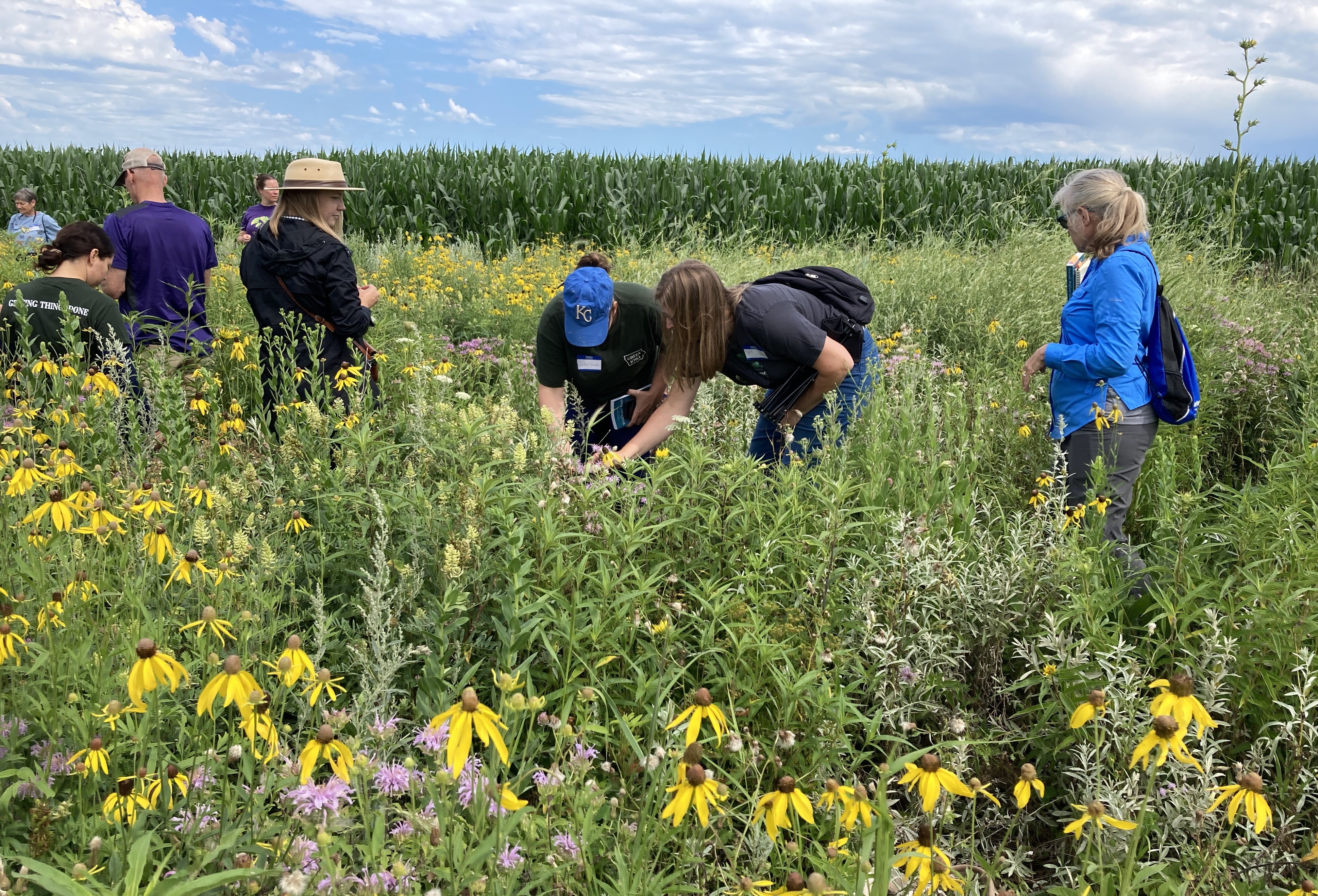Botany Beginners 2022

Managing Prairie Strips
This course is designed for certified crop consultants, conservation professionals, farm managers, farmers, and landowners. It should be helpful to anyone involved in planting or managing CRP acreage that uses native prairie plants, such as the Prairie Strips practice (CP-43). Plant ID skills are essential to monitor establishment success and recognize troublesome invaders before they become too numerous to combat. Timely evaluation will simplify management decisions and improve the overall performance of these conservation practices.
Course elements
- Five, 1-hour webinars on Zoom, Tuesdays from June 21 – July 19. Lecture, with breaks for questions.
- All lectures will be recorded, closed-captioned, and archived within 1-2 weeks. We strongly recommend that students view these recordings from late June through late July, during the growing season. In designing this course, we assume that students will develop their plant ID skills in between lectures, making frequent reference to living plants in their surroundings.
- One, in-person field day, Roadman Farm, Grundy County. Several in-field and edge-of-field prairie strips of different ages, and a field experiment comparing dormant and spring planting of two seed mixes.
- Informal homework - We will encourage practice between lectures by suggesting homework activities to reinforce what you are learning.

What you will need
- The course textbook, Newcomb's Wildflower Guide (1989), by Lawrence Newcomb and Gordon Morrison. It can be purchased from Little, Brown and Company
- Your favorite weed identification guide. We assume some familiarity with common agricultural weeds
- At least one site to practice plant ID, such as a prairie strip, other CRP, or planted roadside
- Proper PPE for common hazards such as dehydration, sunburn, ticks, mosquitos, wild parsnip
- An inexpensive 7x -10x pocket magnifying lens (recommended)
You will learn how to
- Observe, photograph and name important characteristics to help with plant identification
- Recognize the most common planted species in CRP fields
- Make use of plant ID guides, online resources, and advanced tools
- Identify the more common plants before they flower
- Evaluate a prairie stand at year 1 and year 3, identify management issues and suggest remedies
- Narrow down the range of possible grasses, and make a plausible ID
- Recognize the potential for a prairie remnant worthy of protection
JUNE 21, 2022
Lesson One
Plant ID fundamentals 1: Basic terminology. How to take plant photos for later ID. Plants of the Day: two to four most common CRP forbs
JUNE 28, 2022
Lesson Two
Plant ID fundamentals 2: How to use Newcomb’s Guide, three top plant families, and more common CRP forbs
JUly 5, 2022
Lesson Three
Identifying plants in establishing prairie strips: Finding native plants among the weeds. Common weedy look-a-likes
JUly 12, 2022
Lesson Four
Plants of mature prairie strips: Troubleshooting ID
JUly 19, 2022
Lesson Five
Site assessment and seedling ID: Common look-a-likes. Management considerations. Other topics TBD according to student feedback
JUly 19, 2022
In Person Field Day
10:00am to 12:00 p.m., Roadman Roadside Park, Grundy County. Practice assessment of different-aged stands and management considerations.
Copyright 2022. All rights reserved.

